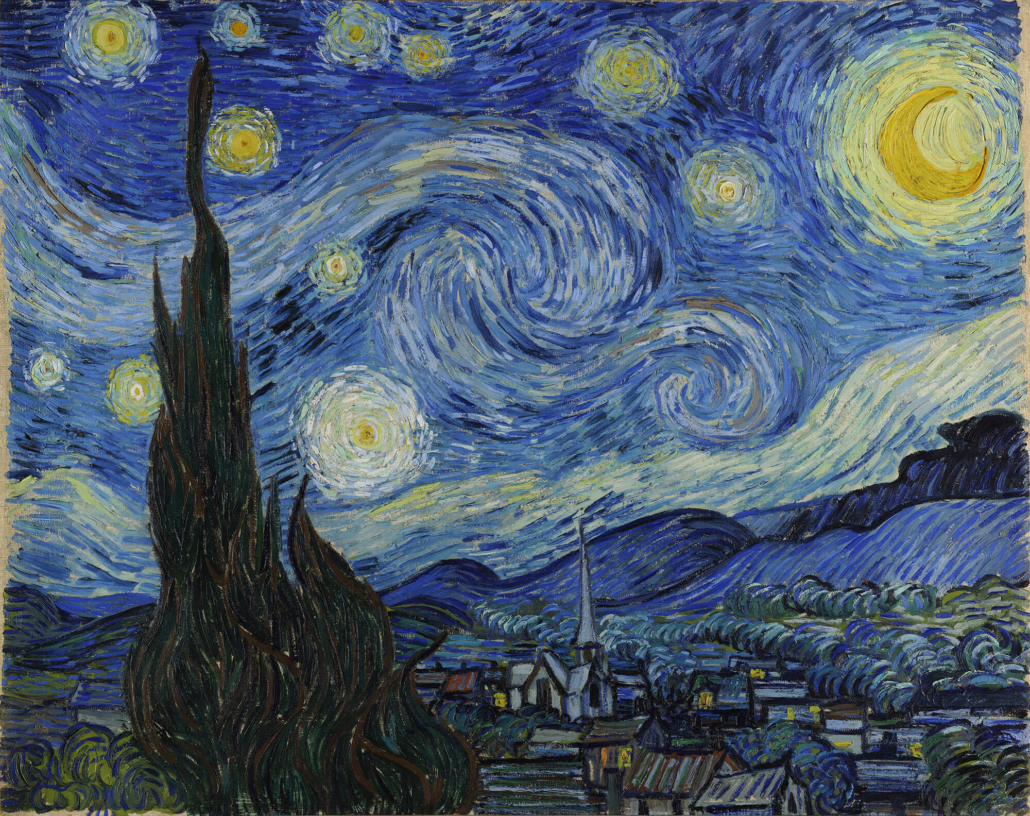Why is this so well-loved? A painting of the night sky that looks nothing like its subject, with a village that didn’t exist in the foreground, painted by a man in an asylum. Doesn’t sound like a recipe for fame and immortality. Is it even beautiful? You decide. What is unmistakable is the artist’s unique way of seeing and showing the world: the sky is ablaze with swirls of bright light (records from the day it was painted show that the brightest star here is, in fact, Venus), the village is a personal ‘memory of the north’ – a Dutch village from his earlier life transposed into the landscape of southern France, and the sinister wave of the cypress trees, the looming darkness which might represent something in his state of mind at the time. It’s instructive that what is real – trees and town – is far less alive than the magical realism of the radiant sky. Van Gogh paints normally static things so that they vibrate with life and creation: these incandescent stars and think, too, of his flowers or the chair in his room. He’s not just painting them, but remaking them in forcefields of energy and life. He wasn’t at all well at this time, constantly, brutally haunted by mental illness (and, by now, deficient in the ear department to the tune of one). Perhaps the clearest reason for the enduring popularity of this painting, though, is the fact that what we see is less important than *how* we see, what life forces we can find in the world. In making his own imagination wildly, wondrously visible, he offers us a model for being alive, and demonstrates that, for all its tragedy, his illness was also his genius: a miraculous receptivity to creation, a tremendous empathy for the act of existence, a superhuman will to resist darkness and find light and hope.

 Bar at the Folies-Bergère – Manet
Bar at the Folies-Bergère – Manet